When Tornadoes Hit Communities, Scouts Know They Need to Help
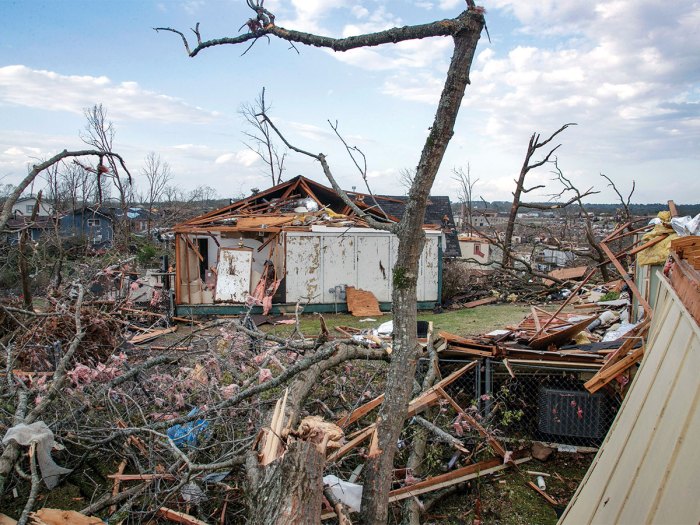
March 31, 2023 started quietly. But severe thunderstorms were in the forecast, and by that afternoon, clouds began bubbling over Little Rock, Arkansas, and turning an ominous green.
Brennan Horton was in class as the school day neared its end. Suddenly, he heard alerts ring out on everyone’s cellphones.
“It was a symphony of phone alarms,” the 15-year-old Life Scout says.
The weather alerts warned everyone to take cover. A nightmarish EF3 tornado, 600 yards across and churning winds up to 165 miles per hour, was barreling through the northern part of the city. Students rushed to safe places within their schools and waited anxiously as the storm passed.
“We didn’t know if our house had gotten hit or not because the power got knocked out,” says Thomas Miller, 14, a Star Scout with Troop 24 in Little Rock.
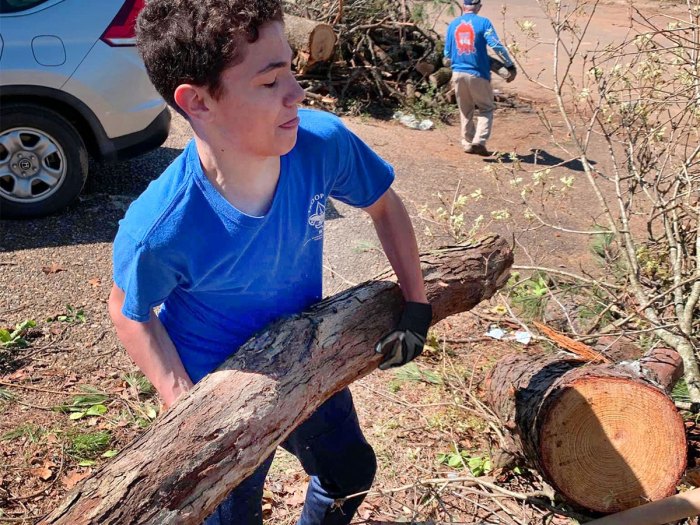
Thomas Miller of Troop 24 removes fallen tree branches in Little Rock, Arkansas.
His family’s home was OK, but others weren’t as fortunate as the tornado carved a path of destruction 34 miles long, smashing brick buildings to rubble and ripping roofs off houses.
Seeing the aftermath, the Scouts of Troop 24 knew they needed to do something.
“There’s a thought of responsibility of going out to help,” Brennan says. “It’s something that I want to do. Simply going out and helping people is what Scouting is all about.”
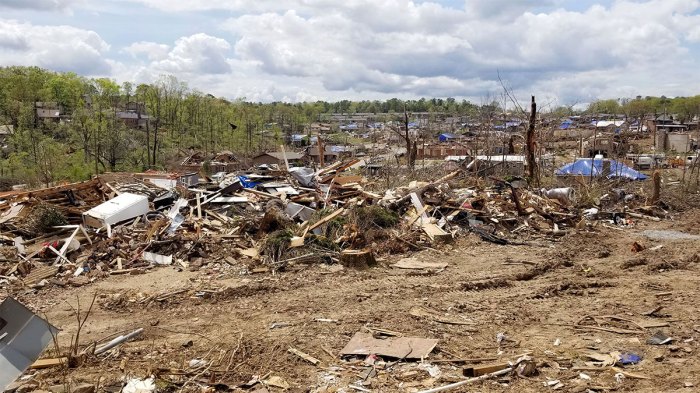
An EF3 tornado can topple home walls and rip roofs off buildings, as seen here with blue tarp-covered houses.
WIDESPREAD DEVASTATION
The Little Rock twister wasn’t the only one to strike on March 31. More than 140 tornadoes touched down across 16 states that day and the next. It marked the third largest tornado outbreak for a 24-hour period in U.S. history.
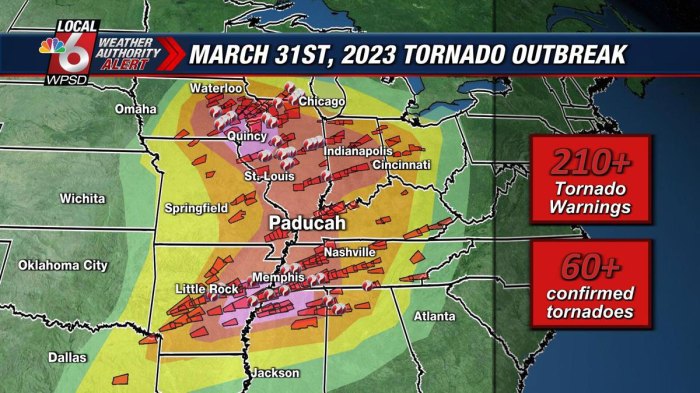
The outbreak added to an already active month as March 2023 saw nearly 200 twisters — the second most in recorded history for the month of March. The week before, severe storms battered Texas, Tennessee, Alabama, Georgia and Mississippi. These storms spawned multiple deadly tornadoes, reaching EF3 and EF4 on the Enhanced Fujita scale. The scale measures a tornado’s intensity based on wind speeds and damage. A tornado at an EF3 rating or higher often uproots trees, demolishes houses and tosses cars.
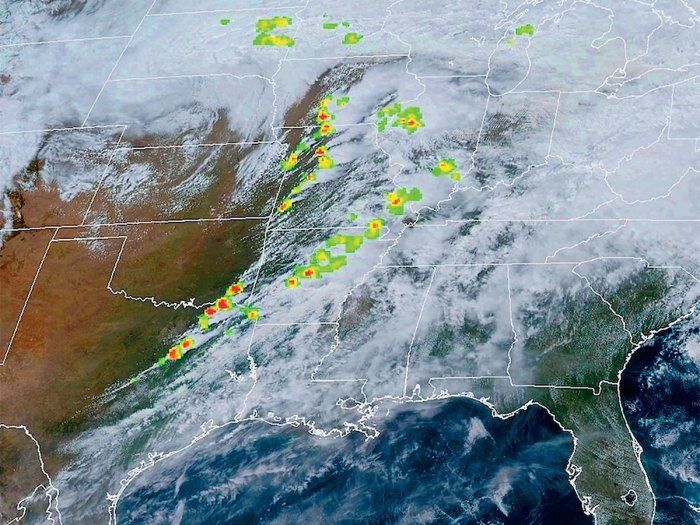
One of these violent twisters tore through Amory, Mississippi. The Banzhaf family has friends there, and Davis Banzhaf and his father went up to check on them.
“It was bad,” says Davis, 15, a Life Scout with Troop 14 of Starkville, Miss. “It’ll be something I’ll remember for a long time.”
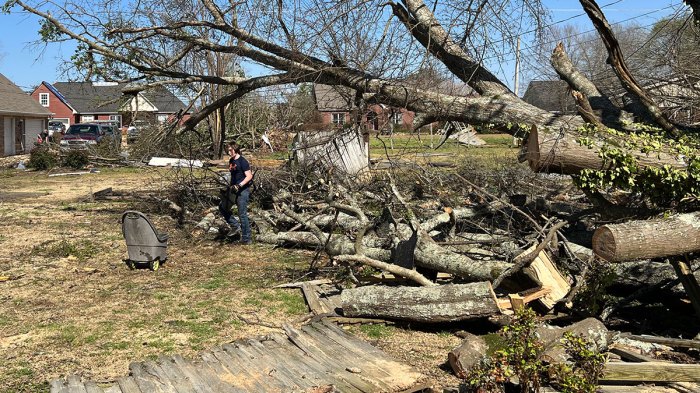
Davis Banzhaf of Troop 14 helps clean up a yard in Amory, Miss.
Telephone poles were snapped in two, large trees were toppled over, and roofs had been peeled off homes and businesses. Davis and his father knew what to do.
“I immediately asked what I could do to help,” he says. “I just hopped right to work, carrying things, clearing out where a tree had fallen, picking up fence posts.”
CLEANING UP
In Little Rock, neighborhoods were smashed into piles of debris.
“Multiple houses of people I knew were completely wiped out — you couldn’t see them anymore,” says Revanth Nama, 13, a Star Scout with Troop 24. “It was kind of sad to see all the houses that were gone.”
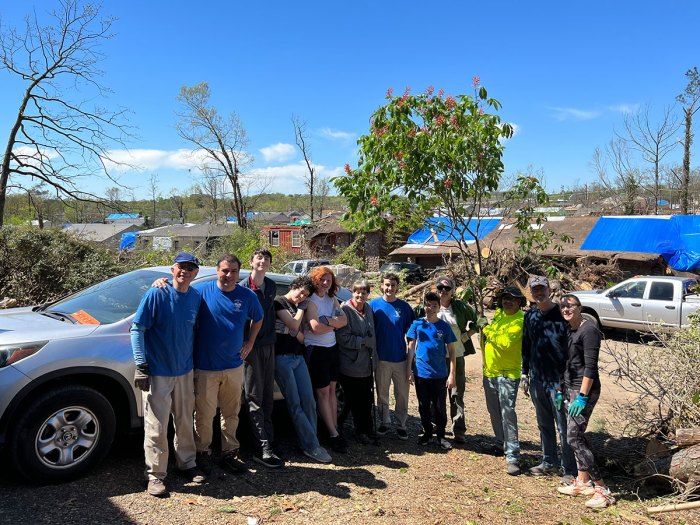
Scouts with Troop 24 take a break from removing debris from a yard in Arkansas.
The adult leaders in Troop 24 looked for ways the Scouts could help, starting with people they knew.
“Once I figured out everyone in my life is safe and good, let’s go out and help as many people as we could,” says Eben Oschner, a Life Scout.
The troop picked up trash and debris, and then helped with local food drives.
“The experience made me feel like this is what Scouts do,” says Anay Pandit, 11, a Scout.
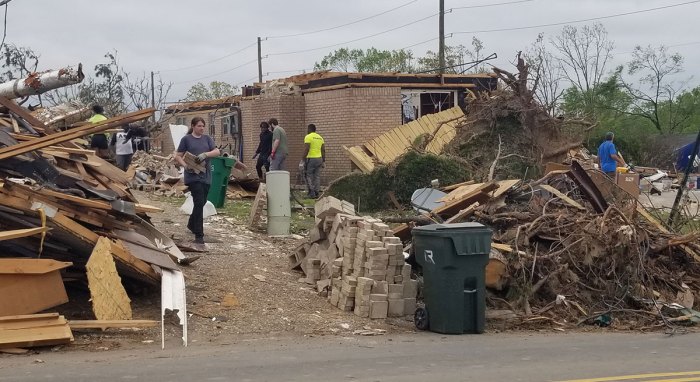
Last year’s tornado outbreak in Little Rock, Arkansas, produced some of the strongest storms the city had seen since 1999.
YOUR RESPONSIBILITY
After a natural disaster, you might feel the urge to jump in and help. After all, a Scout is helpful.
Sometimes, though, the area might not be safe, and it’s important to not get into a situation in which you become a victim, too. Damaged buildings could fall, broken glass and nails likely will be everywhere, and downed powerlines pose a deadly hazard.
Enter areas only when safety can be guaranteed. If an area is deemed too dangerous, you can still help in other ways.
“If you know anyone in the area, you can call to check on them,” Davis says. “If you don’t know anyone, you can send food or water; you could talk to your troop about helping out in different ways. There are lots of opportunities for helping people.”
You can also check with your council or organizations like the American Red Cross, Salvation Army, and religious and community groups to see if they’re already helping and if you can contribute. Any amount of help can lift someone’s spirits when they’re facing such devastation.
“It’s not really like, ‘I should do this,’ ” says Oliver Vesecky, 12, a Tenderfoot Scout with Troop 24. “It’s more, ‘I want to do this to give others hope.’ ”
What Do You Do?
Most tornadoes rate as an EF0 or EF1 on the Enhanced Fujita scale, but even a weak storm can cause significant damage. Most tornado casualties are caused by flying debris.
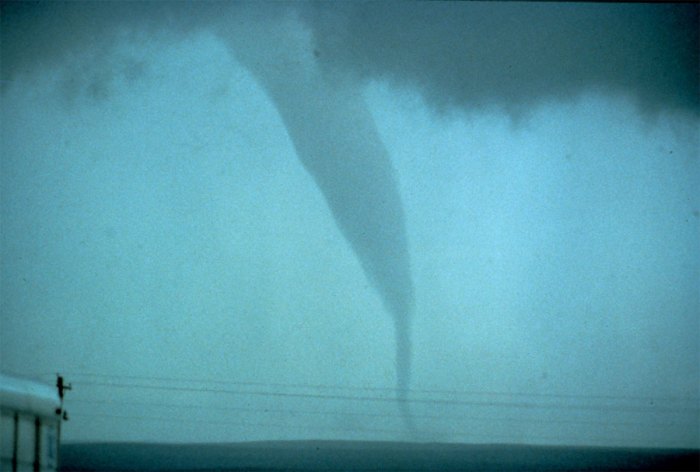
Weather bureaus issue watches when conditions are right for tornadoes and warnings when they have been sighted. During a watch, keep up with weather updates. If you’re outside, pay attention to changes in the sky, like:
- dark clouds sometimes tinged with green.
- heavy rain and hail.
- a funnel-shaped cloud.
- a roaring noise.
When a warning has been issued, get into a basement or a small interior room, such as a closet, bathroom or hallway. Close all doors and get under something sturdy, like a heavy table. You can protect yourself from flying objects with a mattress or blankets. Stay away from windows, doors and outside walls.
If you are caught in the open when a tornado approaches, get to a low spot, lie face down and cover your head. A ditch or other low spot is a good place to lie down if there is no floodwater.
Photos by NOAA; Courtesy of Troop 24; Benjamin Krain/Getty Images; Getty Images/iStock Photo; Courtesy of the families
Leave a Comment